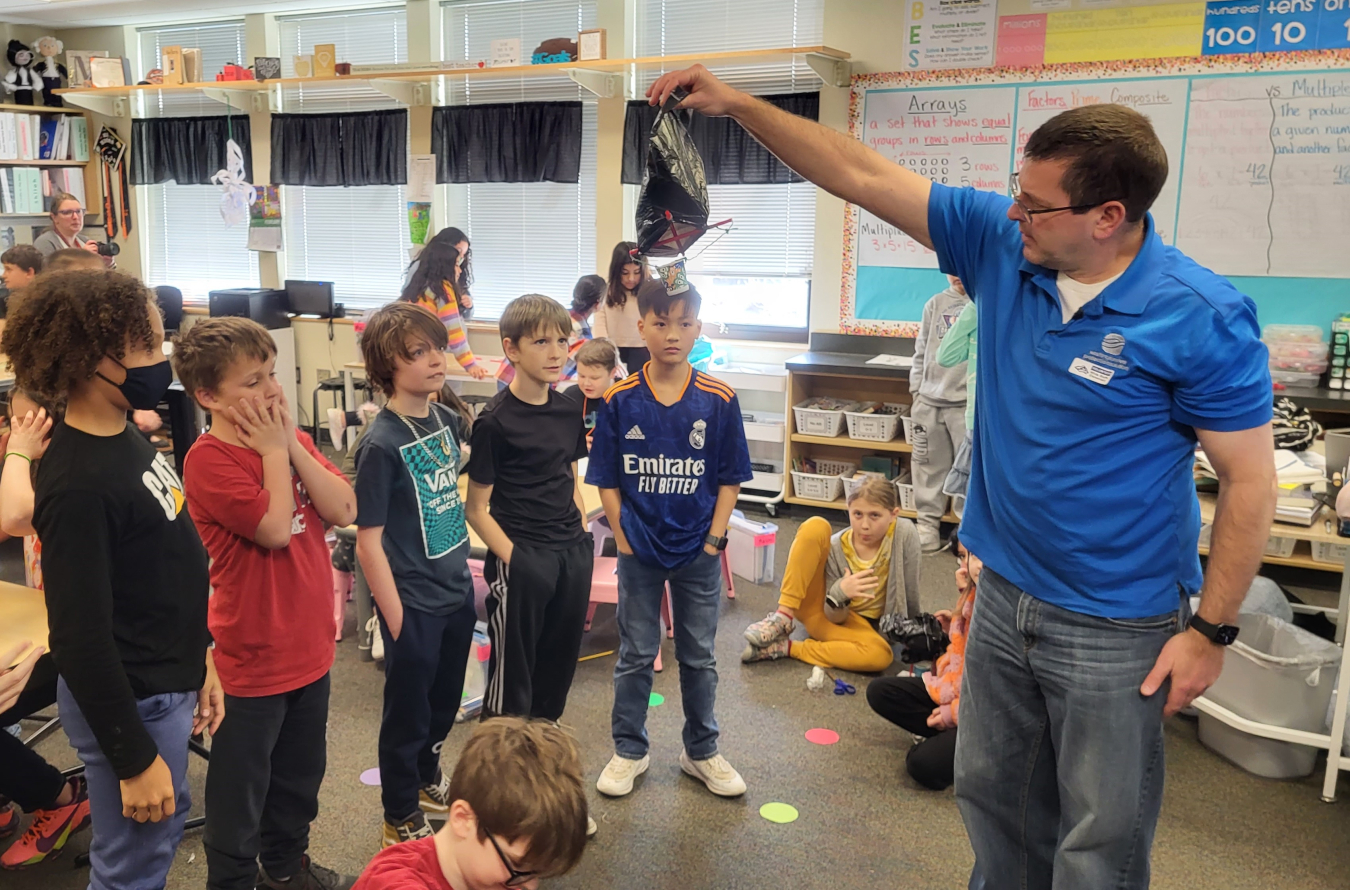Engineers from the Hanford Site proved that playing with play dough isn’t only heaps of fun, but it also provides a perfect blend of science, play and learning.
Office of Environmental Management
February 28, 2023
RICHLAND, Wash. – Engineers from the Hanford Site proved that playing with play dough isn’t only heaps of fun, but it also provides a perfect blend of science, play and learning.
More than 100 Hanford engineers recently volunteered to lead interactive demonstrations about electrical circuits and other activities for elementary and middle school students in southeastern Washington state to increase interest in STEM careers. The science, technology, engineering and math activities included making parachutes and paper gliders, using conductive clay circuits and remotely handling “radioactive” pingpong balls.
“Activities in elementary and middle schools are all hands-on,” said Jeff Dahl, a Bechtel National Inc. engineering group supervisor at the Waste Treatment and Immobilization Plant Project who is on the Hanford Engineers Week committee. “The goal is to proactively reach out to area schools to get kids interested in STEM careers.”
Read a related feature about National Engineers Week. EM Update interviewed four engineers supporting EM across the DOE complex to learn about their careers and contributions to the cleanup mission.
The group of Hanford contractors and other participating organizations included Bechtel, Central Plateau Cleanup Company, Hanford Mission Integration Solutions, Washington River Protection Solutions, Atkins, Hanford Laboratory Management Inc., and Energy Northwest.
The group holds about 200 hands-on interactive sessions each year with over 4,300 students in local elementary, middle and high schools. High school students participate in a friendly competition to solve an engineering-related challenge. In a typical year, about 100 teams participate, with each team of three to four students building a device based on that year’s challenge.
“We need future STEM professionals who will help deliver on our cleanup mission,” said Brian Vance, manager of EM’s Office of River Protection and Richland Operations Office. “You never know if a student’s participation in one of these sessions is what will spur their interest in engineering or science as a career.”
To receive the latest news and updates about the Office of Environmental Management, submit your e-mail address.

